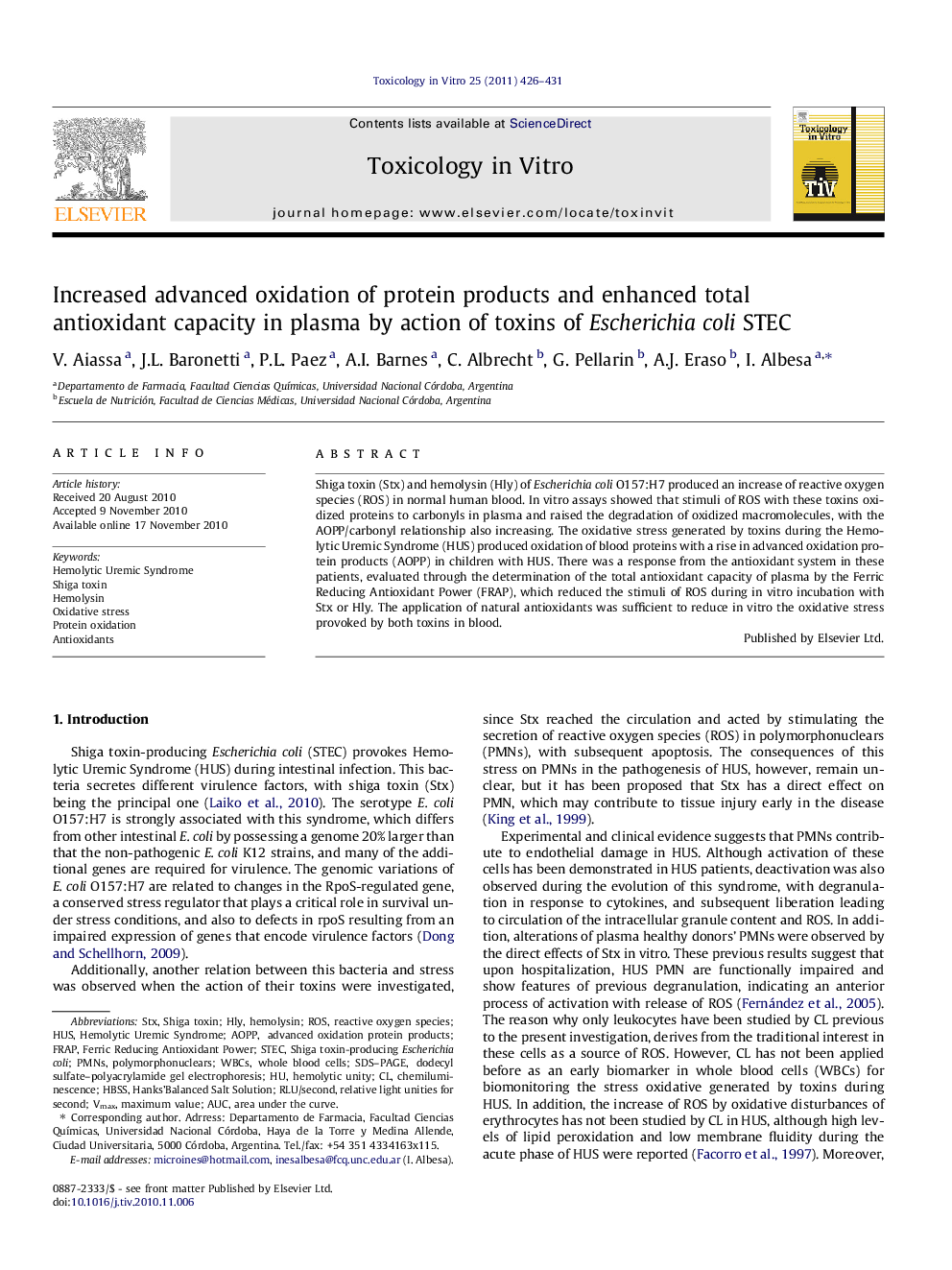| Article ID | Journal | Published Year | Pages | File Type |
|---|---|---|---|---|
| 2602915 | Toxicology in Vitro | 2011 | 6 Pages |
Shiga toxin (Stx) and hemolysin (Hly) of Escherichia coli O157:H7 produced an increase of reactive oxygen species (ROS) in normal human blood. In vitro assays showed that stimuli of ROS with these toxins oxidized proteins to carbonyls in plasma and raised the degradation of oxidized macromolecules, with the AOPP/carbonyl relationship also increasing. The oxidative stress generated by toxins during the Hemolytic Uremic Syndrome (HUS) produced oxidation of blood proteins with a rise in advanced oxidation protein products (AOPP) in children with HUS. There was a response from the antioxidant system in these patients, evaluated through the determination of the total antioxidant capacity of plasma by the Ferric Reducing Antioxidant Power (FRAP), which reduced the stimuli of ROS during in vitro incubation with Stx or Hly. The application of natural antioxidants was sufficient to reduce in vitro the oxidative stress provoked by both toxins in blood.
